Lobsters and crabs are both crustaceans found in marine environments, but they have distinct differences. Lobsters, belonging to the family Nephropidae, are typically larger and have a long, distinct tail and two large claws. They are known for their more elongated bodies and live mainly on the seafloor. Crabs, on the other hand, are part of the infraorder Brachyura and are characterized by a shorter, broader body and a wide, flat carapace.
Crabs have a more varied habitat range, including ocean floors and estuarine areas, and are known for their sideways walk. Both are popular in cuisines worldwide, but their flavors, textures, and culinary uses are notably different.
Explanation of Lobster
A lobster is a marine crustacean that is part of the family Nephropidae, commonly found in cold and temperate ocean waters. These creatures are notable for their distinctive physical attributes and biological characteristics, as well as their economic and culinary significance.
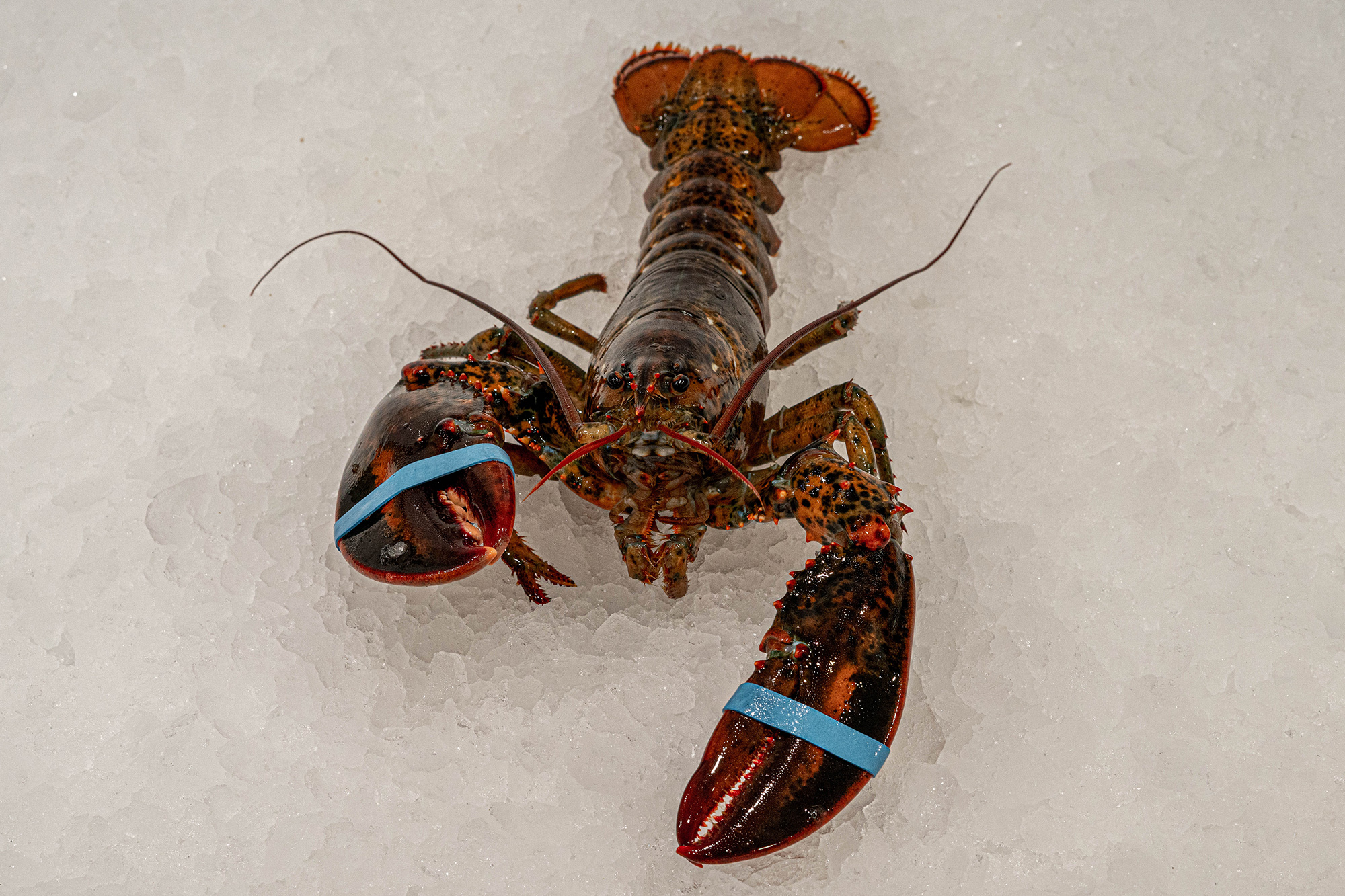
Here’s a more detailed explanation:
Physical Characteristics
- Body Structure: Lobsters have a segmented body covered by a hard exoskeleton that provides protection. This exoskeleton must be shed and regrown (a process called molting) for the lobster to grow.
- Claws and Legs: They possess five pairs of legs, with the first pair often being enlarged into claws. These claws can be asymmetric, with one being larger and used for crushing, while the other is smaller and used for cutting or grabbing.
- Tail: Their long, muscular tail is a distinctive feature, used for swimming by rapidly flexing to propel backward.
Habitat and Behavior
- Habitat: Lobsters typically inhabit rocky, sandy, or muddy bottoms of the ocean, primarily at depths where the water is cool.
- Diet: They are omnivores, feeding on fish, mollusks, other crustaceans, algae, and organic detritus.
- Movement: While lobsters can swim backward using their tails, they mostly walk along the ocean floor.
Reproduction
- Lobsters reproduce by laying eggs, which the female carries on her underside until they hatch. The larvae go through several stages in the water column before settling on the ocean floor and developing into adult form.
Economic and Culinary Value
- Lobsters are highly valued as seafood and are considered a delicacy in many cultures. The meat, particularly from the claws, tail, and legs, is prized for its tender, sweet flavor.
Longevity and Growth
- Some species of lobsters are known for their relatively long lifespans, with certain individuals living over 100 years. Their growth is indeterminate, meaning they continue to grow throughout their life.
Ecological Role
- As part of the marine ecosystem, lobsters play a role in maintaining the balance of marine life, both as predators and prey.
Lobsters are fascinating marine animals known for their unique physical features, interesting behavior, and significant role in marine ecosystems and human cuisine. Their ability to grow large, and live long, and their delicious taste make them a subject of both ecological interest and economic importance.
Explanation of Crab
A crab is a type of aquatic or terrestrial crustacean, distinguished by its short, broad body and a pair of large pincers or claws. Crabs are part of the infraorder Brachyura, which contains over 6,800 species, making them one of the most diverse and widespread crustacean groups.
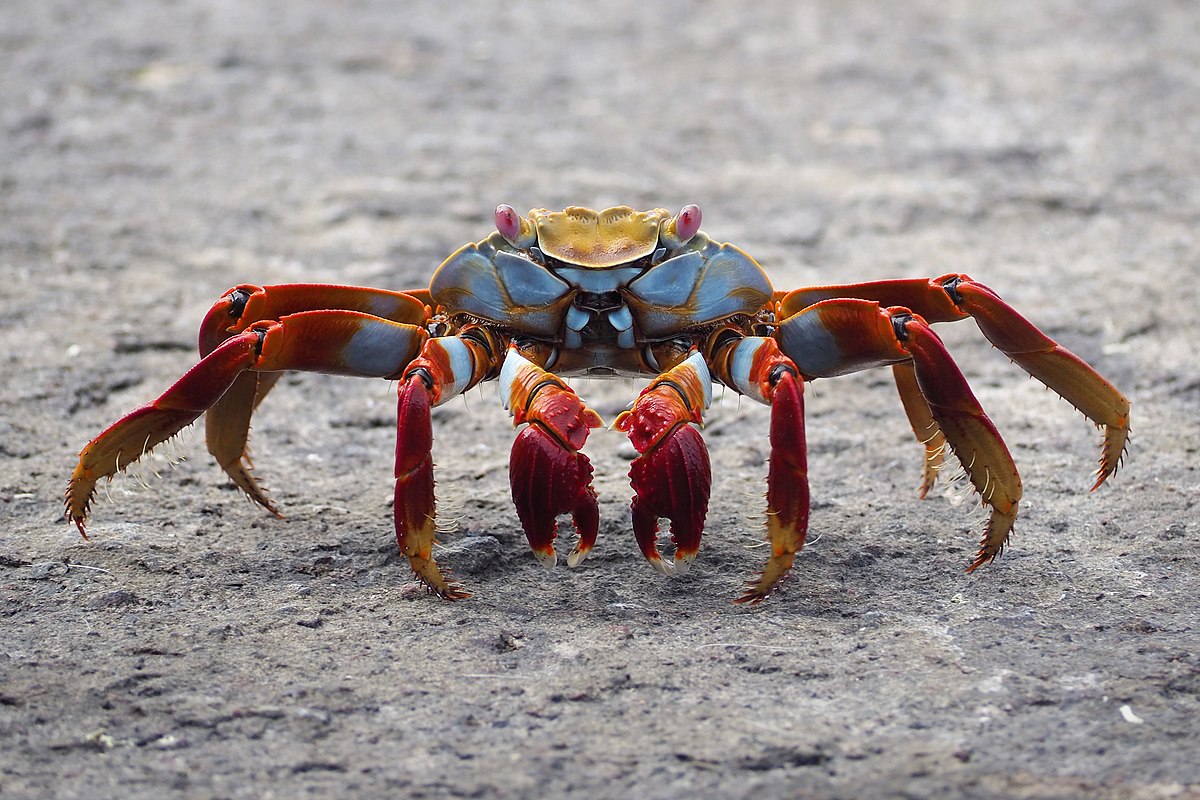
Here’s a detailed explanation of their characteristics and lifestyle:
Physical Characteristics
- Body Structure: Crabs typically have a compact, flattened body with a small, tucked-under abdomen, which is a key feature distinguishing them from other crustaceans like lobsters.
- Exoskeleton: Like other crustaceans, crabs have a hard, protective exoskeleton that they must molt to grow.
- Claws and Legs: They possess a pair of claws or pincers, used for defense and capturing prey, along with four pairs of walking legs. The claws can be quite powerful, especially in larger species.
Habitat and Behavior
- Diverse Habitats: Crabs are found in all of the world’s oceans, in freshwater, and on land. Marine species inhabit various environments from deep-sea vents to intertidal zones, while terrestrial species can be found in tropical forests and even arid regions.
- Movement: Crabs are known for their distinctive sideways walk, which is more efficient for moving along the ocean floor or across the land.
Diet
- Crabs are generally omnivorous, feeding on algae, plankton, mollusks, small fish, and detritus. Some species are more specialized in their diet.
Reproduction
- Reproduction in crabs typically involves the female releasing eggs into the water after fertilization. In many species, the females carry the eggs attached to their abdomens until they hatch.
Ecological Role
- Crabs play a significant role in aquatic and terrestrial ecosystems as both predators and prey, contributing to the balance of these environments.
Economic and Culinary Importance
- Many crab species are a valuable food source for humans, known for their sweet and tender meat. Crabs are a staple in various cuisines worldwide and are harvested both commercially and recreationally.
Adaptations
- Crabs have developed various adaptations to survive in their specific environments. For instance, some terrestrial crabs have adapted to breathe air, and deep-sea crabs can withstand extreme pressures.
Crabs are a diverse group of crustaceans with a wide range of habitats and lifestyles. Their adaptability, interesting behavior, and economic importance in fisheries and cuisine make them a significant group within marine biology and ecology.
Importance of understanding their differences
Understanding the distinctions between crabs and lobsters is essential for many reasons such as food, ecological, and scientific aspects:
- Ecosystem Management: Understanding the differences between these two types of crustaceans is crucial to the management and protection of ecosystems in the marine. Different species of lobsters as well as crabs have distinct functions in the form of predators, prey, and scavengers, affecting the balance of the marine food webs.
- Sustainable Fisheries: Understanding the various life cycles as well as habitat preferences and behavior aids fisheries in managing and sustainable catch crabs and lobsters. This knowledge is vital in establishing regulations like limit sizes, limits on quotas, or closed seasons to avoid overfishing.
- Food and culinary Appreciation: Professionals in the field of culinary and seafood enthusiasts gain from knowing the difference between crabs and lobsters. Each one has its unique flavor and texture as well as potential for cooking, allowing inventive and diverse meals catering to different tastes and tastes.
- Research and Conservation: Researchers and scientists studying marine ecology, biology, and conservation are dependent on the correct recognition and knowledge of crab and lobster species. This information assists in assessing the health of the population as well as monitoring environmental changes and implementing conservation plans.
- Economic Value: Lobsters and crabs are of significant economic significance in the industry of seafood, helping to support livelihoods and economies across a variety of coastal areas. Understanding and marketing the right species is essential in commerce and trade.
- Culinary and Cultural Traditions: Crabs and lobsters hold importance in the culture of several coastal communities. Knowing about these species will help keep alive culinary traditions and traditional practices that are based on the consumption of their food.
- Preservation of Biodiversity: Lobsters and crabs are part of the diverse biodiversity that is marine. A thorough understanding and identification of their distinctions aid in the protection of this diversity by preventing accidental capture or harm to non-target species.
- Education and awareness: The process of educating people about the distinction between lobsters and crabs helps create more awareness of marine life and promotes responsible consumption and conservation practices.
Knowing the distinctions between crabs and lobsters is vital for various parties, ranging from ecologists and fisheries managers to chefs and customers. It encourages sustainable practices, safeguards the culture of the past, and aids in the conservation of marine ecosystems as well as biodiversity.
Comparison Table of Lobster vs crab
Here’s a comparison table highlighting the key differences between lobsters and crabs:
| Feature | Lobster | Crab |
| Classification | Family Nephropidae | Infraorder Brachyura |
| Body Shape | Long, cylindrical body with a distinct tail | Short, wide, flattened body with a small tail tucked underneath |
| Size | Generally larger, can grow up to several feet | Varied; from a few millimeters to up to 4 meters in leg span for the largest species |
| Legs | Five pairs of legs; the first pair has large claws | Five pairs of legs; the first pair often forms large pincers |
| Habitat | Mostly found in cold, oceanic environments | Found in oceans, freshwater, and on land; adapts to a wide range of environments |
| Diet | Omnivorous; consumes fish, mollusks, other crustaceans | Omnivorous or scavengers; consume algae, mollusks, decaying matter, etc. |
| Movement | Walks forward and swims backward using its tail | Notable for its sideways walk |
| Coloration | Green, brown, blue, or yellow in the wild; turns red when cooked | Varies greatly depending on the species |
| Economic Value | Considered a luxury food item; significant in the seafood industry | Important in the fishing industry; valued for their meat |
| Reproduction | Females carry eggs under their tails until they hatch | Females carry thousands of eggs under their body |
| Conservation | Subject to fishing regulations for sustainability | Some species threatened by overfishing and habitat destruction |
This table outlines the fundamental differences and similarities between lobsters and crabs, emphasizing their distinct biological, ecological, and economic aspects.
Culinary Uses of Lobster and crab
Lobsters and crabs are both highly prized in culinary circles around the world, celebrated for their rich, succulent meat. However, their culinary uses and preparations can vary significantly, reflecting their unique textures, flavors, and cultural significance.
Lobster Culinary Uses
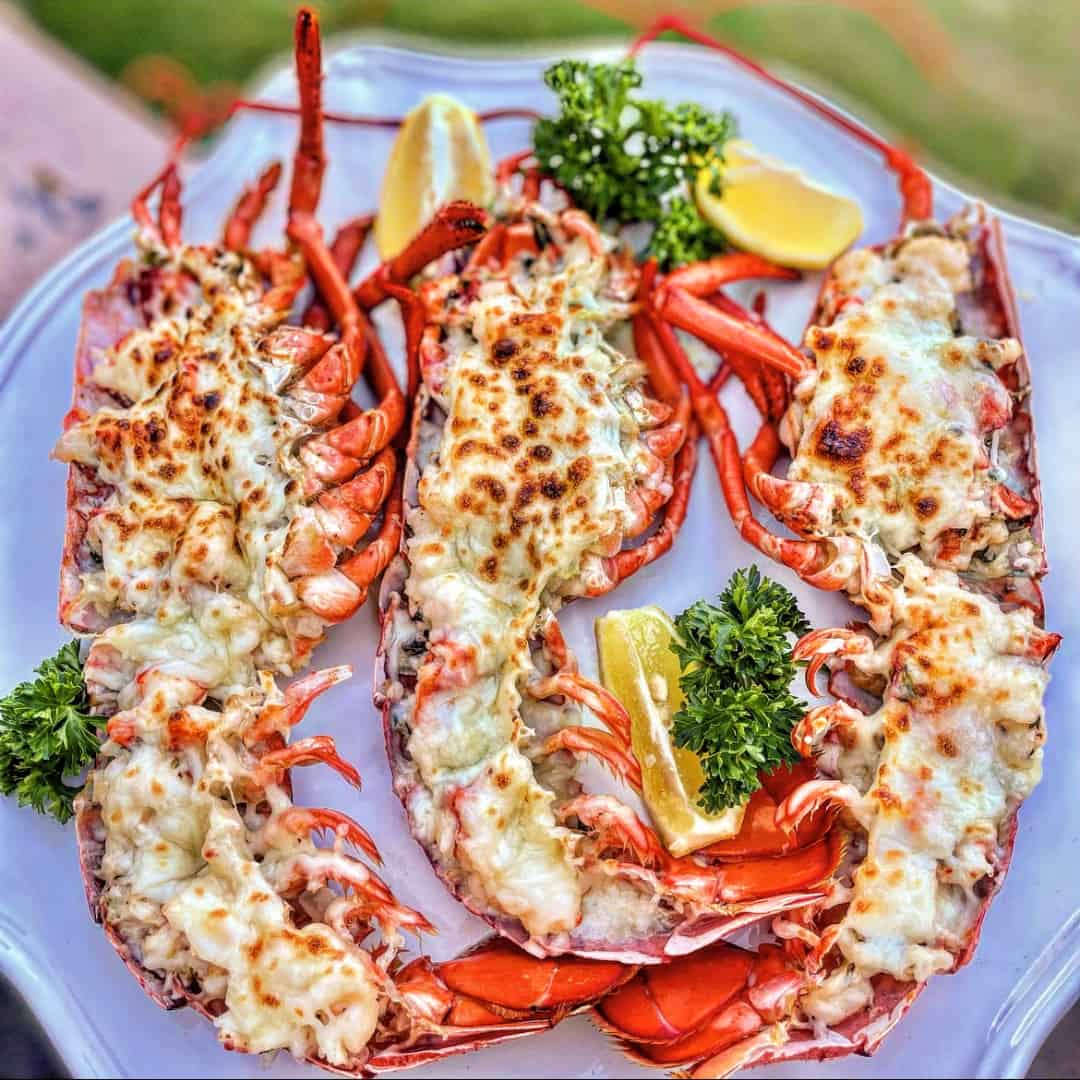
- Texture and Flavor: Lobster meat is known for its tender, succulent texture and a sweet, slightly briny flavor. The most valued parts are the tail and claws.
- Preparation Methods: Lobsters are often boiled or steamed, which turns their shell a characteristic bright red. Grilling and broiling are also popular methods.
- Dishes: Classic dishes include lobster bisque, lobster rolls, and thermidor. Lobster is also served simply with melted butter, in salads, or as part of seafood platters.
- Global Cuisine: While considered a delicacy in many Western cuisines, lobster also features in Asian dishes, often stir-fried with aromatic spices or steamed with delicate sauces.
- Culinary Status: Lobster is often associated with luxury dining and special occasions due to its rich taste and relatively high cost.
Crab Culinary Uses
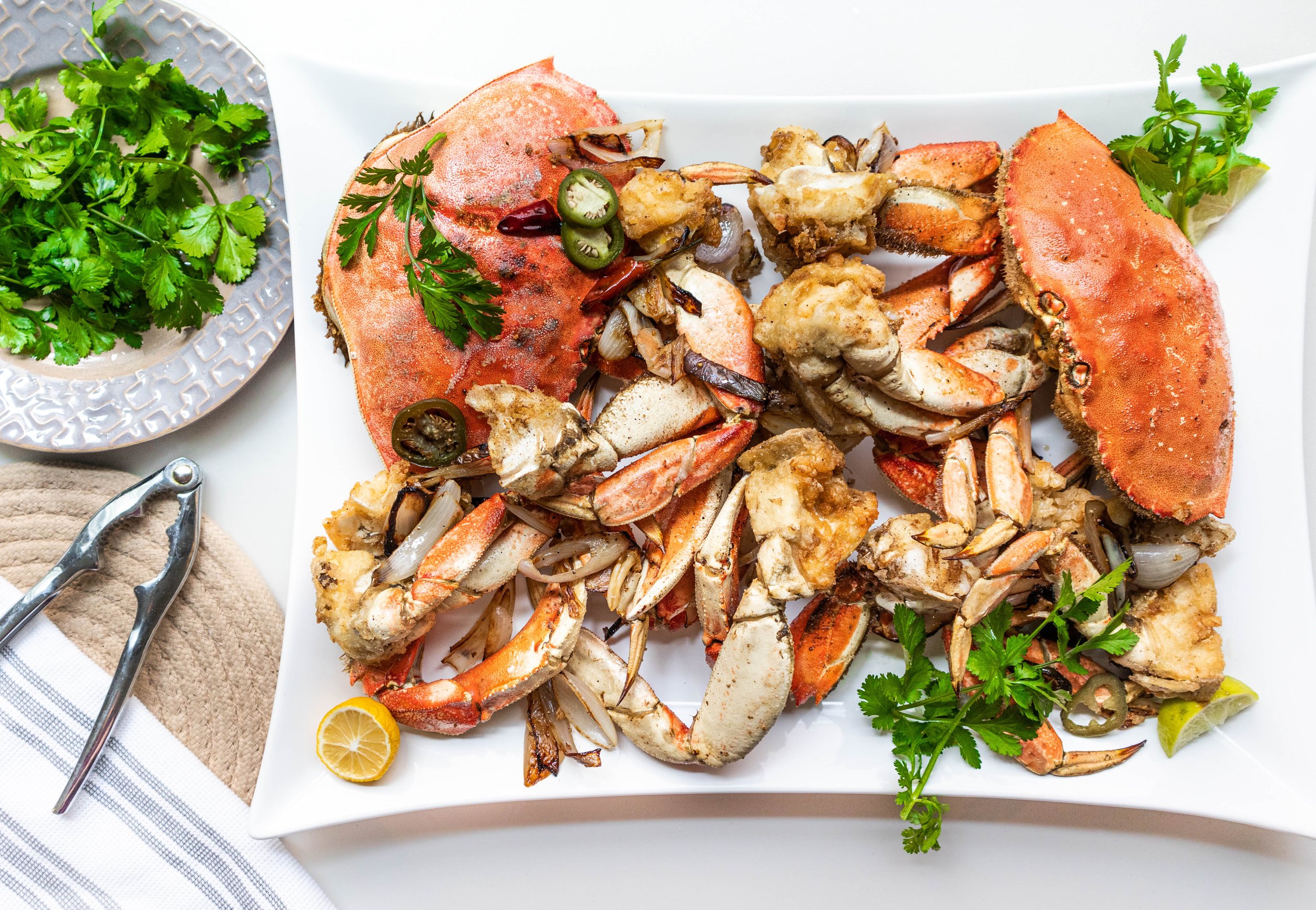
- Texture and Flavor: Crab meat is appreciated for its delicate, flaky texture and sweet, nuanced flavor. Different species offer varying tastes and textures.
- Preparation Methods: Crabs are boiled, steamed, grilled, or baked. Soft-shell crabs, which are crabs that have recently molted, can be cooked whole.
- Dishes: Popular crab dishes include crab cakes, crab bisque, and various crab curries. Crabs are also a key ingredient in seafood stews and chowders.
- Global Cuisine: Crab plays a significant role in many culinary traditions, from the Chesapeake Bay’s famous blue crabs to the spicy crab dishes of Southeast Asia and the refined crab sushi of Japan.
- Culinary Status: Crab is widely enjoyed and is more accessible than lobster in many parts of the world. It’s a common feature in both casual and fine dining.
Cultural and Regional Variations
- North America: Lobster is a staple in New England cuisine, while crab is central to culinary traditions in regions like the Chesapeake Bay and the Pacific Northwest.
- Asia: In Asian cuisines, both lobster and crab are often prepared with rich, complex sauces and spices, reflecting local flavors and ingredients.
- Europe: European preparations might feature lobsters in creamy sauces or in elegant terrines, and crabs in various forms, from simple crab salads to sophisticated crab pasta.
Health Benefits and Risks
Lobsters and crabs offer several health benefits due to their rich nutritional profiles, but there are also some risks to consider, especially for certain groups of people or when consumed in large amounts.
Health Benefits
- High-Quality Protein: Both lobster and crab are excellent sources of high-quality protein, essential for muscle building and repair.
- Low in Fat and Calories: They are low in fat and calories, making them a good choice for those looking to maintain or lose weight.
- Omega-3 Fatty Acids: Both contain omega-3 fatty acids, which are beneficial for heart health, reducing inflammation, and potentially improving brain function.
- Vitamins and Minerals: Lobsters and crabs are rich in vitamins and minerals such as vitamin B12, zinc, selenium, copper, and phosphorus. These nutrients are important for various bodily functions, including immune system support and bone health.
- Low in Saturated Fat: They have low levels of saturated fat, which is beneficial for heart health.
Health Risks
- Cholesterol: Both lobster and crab contain cholesterol, which can be a concern for individuals with heart disease or high cholesterol. The impact of dietary cholesterol on blood cholesterol levels is now considered less significant than previously thought.
- Allergies: Shellfish allergies are common and can be severe. Those allergic to shellfish should avoid lobster and crab.
- Mercury and Other Contaminants: While generally lower in mercury than many fish, shellfish can still contain traces of mercury and other environmental pollutants.
- Sodium: Some crab products, especially canned or processed crab, can be high in sodium, which is a concern for people with hypertension.
- Gout Risk: People with gout or high uric acid levels might need to limit consumption due to the purines found in shellfish, which can exacerbate these conditions.
- Food Poisoning: Improper handling, storage, or preparation can lead to foodborne illnesses. It’s important to cook lobster and crab thoroughly and consume them fresh.
Recommendations
- Moderation: Enjoying lobster and crab in moderation is key to maximizing their health benefits while minimizing risks.
- Fresh and Unprocessed: Choosing fresh, minimally processed options can reduce the intake of added sodium and preservatives.
- Balanced Diet: Incorporating these shellfish into a balanced diet that includes a variety of other proteins and nutrients is the healthiest approach.
Lobsters and crabs can be nutritious additions to your diet, offering high-quality protein, important vitamins and minerals, and beneficial omega-3 fatty acids. However, it’s important to consider the potential risks, especially if you have specific health conditions or dietary restrictions.
Fun Facts about Lobsters and Crabs
Lobsters and crabs are fascinating creatures, and there are many intriguing and fun facts about both that highlight their unique characteristics and behaviors.
Fun Facts about Lobsters

- Blue Lobsters Exist: Only about 1 in 2 million lobsters are blue, a result of a genetic anomaly that causes them to produce an excessive amount of a particular protein.
- Longevity: Lobsters can live for a very long time. Some lobsters have been known to live for over 100 years.
- Regeneration: They have the ability to regenerate limbs. If a lobster loses a claw or a leg, it can grow a new one.
- ‘Left-Handed’ or ‘Right-Handed’: Lobsters can be ‘left-handed’ or ‘right-handed’ depending on which side their dominant, larger claw is on.
- Communication by Urine: They communicate by squirting urine from openings on their faces. This can convey information during fights or courtship.
- Noisy Eaters: Lobsters eat with their stomachs, located a very short distance behind their eyes. They make noise while eating by grinding their stomach teeth.
- Molt to Grow: Lobsters must molt, or shed their shell, in order to grow. During this time, they are very vulnerable until their new shell hardens.
Fun Facts about Crabs
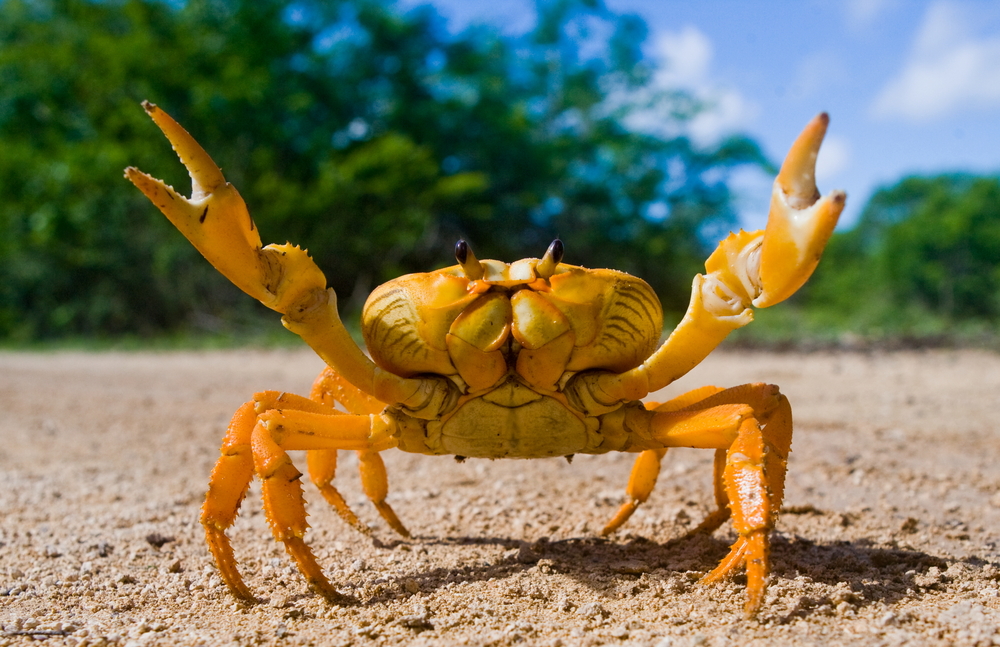
- Crabs Can Be Terrestrial: While most crabs live in water, some, like the coconut crab, live on land and can climb trees.
- Diverse Species: There are over 6,800 species of crabs, ranging in size from the tiny pea crab to the giant Japanese spider crab with the largest leg span of any arthropod.
- Crabs Adopt Homes: Hermit crabs don’t grow their shells. They find and live in discarded shells from other sea creatures, changing them as they grow.
- Immense Numbers: During migration, the red crab of Christmas Island forms dense masses of millions of individuals, creating a spectacular sight.
- Crab Blood for Medicine: Horseshoe crab blood is blue and is used in the medical industry to test for bacterial contamination due to its sensitivity to endotoxins.
- Unique Gait: Crabs are famous for their sideways walk, which is due to the structure of their legs allowing for efficient lateral movement.
- Communication with Claws: Some crab species communicate by waving their pincers or drumming their claws on the ground.
Both lobsters and crabs have evolved fascinating and unique traits that have allowed them to adapt to various environments and situations, making them intriguing subjects of study and conversation.
Final Thoughts
Lobsters and crabs are fascinating and distinct marine crustaceans that have captivated the attention of humans, both for their culinary value and intriguing biological characteristics. Lobsters, known for their elongated bodies, powerful claws, and life predominantly in cold oceanic depths, contrast with the diverse and adaptable crabs, which exhibit a wide range of sizes, shapes, and habitats, extending from the ocean floor to land. Both play significant roles in their ecosystems and face challenges such as overfishing and habitat loss.
In culinary terms, they are celebrated for their unique flavors and textures, forming an integral part of various global cuisines. Beyond the dinner plate, lobsters and crabs are remarkable for their unique adaptations like regeneration and sideways walking, contributing to the endless fascination and ongoing study in the field of marine biology.


